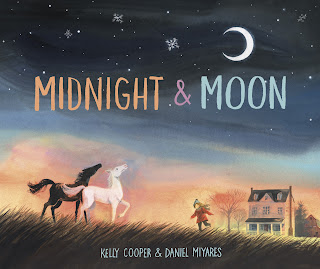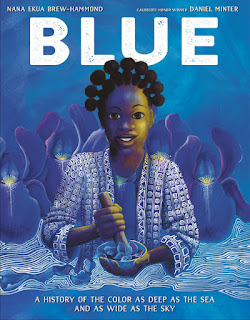It seems like yesterday, but more than twenty years have come and gone since that sunny summer day. In a tiny town along one of northern Michigan's largest lakes, a few people strolled down the sidewalks. On one sidewalk, a homeless kitten wandered. Most people hardly gave it a glance. I was not one of them.
I stopped and talked to the lost soul for a few minutes. Walking away, I engaged in the timeless battle of "should I or should I not." When I turned around to go back, a family of three had stopped to kneel down and chat with the kitten. The kitten had found its forever family. A little boy was overjoyed. A few months later, my remarkable, precious Xena came into my world.
The reality is, we never know when or what kind of animal will become a member of our family. When they do, most days our joys are multiplied beyond our imagining. Two recent publications, a month apart, focus on our feline friends. In the first, Bathe The Cat (Chronicle Books, February 8, 2022) written by Alice B. McGinty with illustrations by David Roberts, a clever cat creates off-the-charts comedy with a little help from magnetized letters.
Come on folks,
it's time to clean!
Upstairs,
downstairs,
in-between.
This family, two youngsters, a baby, and two dads, need to work together because Grandma is arriving at two o'clock. Their house is chaotic clutter. All the assignments are posted on the refrigerator door. They are read aloud by Daddy. The last one,
and I'll bathe the cat,
is not welcome news for the cat.
The wily feline rearranges the letters. When Daddys asks why the children and Dad are wasting time, they look at the tasks listed on the door. They make no sense at all.
. . . Bobby, bathe the mat.
Sarah, mop the baby,
and Dad will mow the cat.
Trust me, this cat does not want to be mowed. Paws switch the letters again. It is another crazy list.
The crafty cat goes back to the refrigerator. This list is even more nonsensical, until Daddy makes a discovery. It is almost time for Grandma Marge to walk through the door. Will she find mayhem or peaceful perfection?
Author
Alice B. McGinty begins this book with a common scenario, getting ready for the visit of a relative. As her first rhyming phrases unfold, we easily step into their rhythm until the last sentence, a question. Then, we burst into laughter. Our laughter increases with every meddlesome moment the cat spends moving the words and fashioning outlandish new tasks which rhyme beautifully. Here is another hilarious passage.
No, no! That's WRONG! You call this work?!
Have all you people gone BERSERK?
You've scrubbed my fish! You fed the FLOOR?!
MUST I READ THIS LIST ONCE MORE??
The bright shades of orange, pink, green, yellow, and blue we see on the front, right, of the open dust jacket invite happiness regardless of the frantic looks on all the characters, except the cat, of course. We see here a hectic incident frozen in time. We are curious to know what has happened. To the left of the spine on another crisp white background, the child wearing the dinosaur costume is kneeling over the fishbowl. She is feeding three eager fish.
On the book case the background is white. On either side of the spine is a single image. We see the fathers and two of the children chasing the cat that is nearly off the right side. The baby is smiling and crawling along in the lower, left-hand corner.
On the opening endpapers, letters on the refrigerator spell the tasks to accomplish. On the left side is a child's drawing of Daddy and Dad. For reasons readers can guess, the words on the closing endpapers refer to things to do for the cat. On the left side is a drawing of Grandma Marge. On the right side is a drawing of the cat.
On the title page, the cat calmly licking one paw with a toy mouse in the other paw sits on top of the ''t'' in bathe. These images by artist
David Roberts ask readers to pause at every page turn. We need to appreciate the details and the expressions on the characters' faces. Just looking at the cat's face will have readers giggling.
Rendered in pencil and watercolor, each two-page visual is loaded with elements extending and enhancing the words. Sometimes we are brought close to the action and feel as though we are participants. Other times, we stand back more as observers. When the cat is rearranging the letters on the refrigerator, we are brought very close which heightens the laughter factor.
One of my many favorite illustrations takes place outside the characters' home. The home with its hues of orange door supplies the background. On the left, Bobby is bathing the welcome mat with a CAT SHAMPOO BOTTLE next to the large orange bucket. Behind him and to his right, Daddy is vacuuming the lawn. On the right, Sarah is mopping a laughing baby. Dad is looking perplexed as he stands next to the lawn mower. The cat, tail with fur on end, is running off the right edge. It just heard the sentence
Mow the cat?
If there is one thing we know to be true, it is laughter can be the best medicine, especially the laughter of children. This book, Bathe The Cat written by Alice B. McGinty with artwork by David Roberts, is one readers will read often and listeners will beg to have it read repeatedly. I highly recommend you have a copy in both your personal and professional collections.
To learn more about Alice B. McGinty and David Roberts and their other work, please follow the link attached to their names to access their websites. Alice B. McGinty has accounts on
Facebook,
Instagram, and
Twitter. David Roberts has an account on
Instagram. At the
publisher's website, you can view interior images.
Who can resist the allure of a kitten? Those little bundles of fur are some of the most magical of baby animals. Their curiosity for whatever is around them and their ensuing shenanigans can melt the iciest of hearts. Author Florence Minor and her husband, artist Wendell Minor, present all the delightful, memorable aspects of these adorable babies in their newest collaboration, Smitten with Kittens (Charlesbridge, March 8, 2022).
Who isn't smitten
with a kitten's sweet MEW
and all the cute things
that kittens will DO?
The first meal of the day gives kittens the energy they need to play. Outside, they love to chase butterflies. Inside, they look in a mirror wondering about the handsome being they see.
If they happen to wander into the bathroom, it will only happen once or at least their humans will keep the toilet paper in a safer location in the future. The television supplies endless entertainment for kittens. The birds are the stars, but they don't seem to fly into the room.
Tucked into the smallest cubbies, kittens hide and expect you to seek. They run and romp and run and romp until their energy is gone. Then, they get cozy and rest. They dream of doing what they do best.
Within a single sentence or two, using rhyming words,
Florence Minor creates joy we willingly embrace. Her pacing asks readers to participate in the narrative, guessing what the second rhyming word is. Throughout the entire narrative, we smile at the behavior of the kitten she so aptly describes. Florence Minor has gifted us with the experience of being a kitten. Here is the first of two sentences. I wonder what the second rhyming word will be.
Kittens make trouble
whatever they DO---
rolling, more rolling . . .
In looking at the open and matching dust jacket and book case, we stop for a bit to relish the artwork of
Wendell Minor. Rendered
in graphite on paper and digital,
the illustrations are rich in texture and authenticity. Every line vibrates with the liveliness embodied in kittens. Wendell's masterful command of light and shadow raises the reader's pictorial experience.
On the front, right side of the jacket, the title text is raised. There are also seven paw prints in varnished white on the right side of the front. To the left, on the other side of the spine, a charcoal kitten is in a pounce pose. Its expression is pure playfulness.
On the opening and closing endpapers are a series of ten kitten poses. It is as if particular seconds are paused in time. They are nearly photographic, but soft in their quality. They are graphite on white. Every single one is stunning.
On the initial title page, two kittens look up from the inside of a cardboard box. One is resting their front paws on the edge of the box. On the formal title page a large image of a kitten begins on the left, crosses the gutter, and extends to the center of the right side. The kitten is curled and napping. It is curled around a red toy mouse with white hearts on it.
White space is an element in these images drawing our attention to the kittens. The kittens are shown in a variety of activities and poses. We might see their entire body or only a portion. Color is used sparingly as an accent.
One of my many favorite illustrations is a two-page picture. Three kittens are seated in a row with their backs to us. One is to the left of the gutter; the other two are to the right of the gutter. They are facing a television screen placed on a large surface. They are staring intently at a bright red cardinal flying close to them among the clouds. Their tiny heads are cocked slightly to indicate their concentration.
Readers of all ages will enjoy reading and rereading Smitten with Kittens written by Florence Minor with artwork by Wendell Minor. At the close of the book are two pages with ten Fun Facts about kittens. For cat and kitten lovers and for those wishing to enhance their appreciation of our feline friends, you'll want to have a copy of this title in both your personal and professional collections.
To learn more about Florence Minor and Wendell Minor and their other work, please follow the link embedded in their names to take you to their shared website. Florence and Wendell also share professional
Facebook and
Pinterest accounts. Florence Minor has accounts on
Instagram and
Twitter. Wendell Minor has accounts on
Instagram and
Twitter. At the
publisher's website, you can view an interior illustration and download an activity sheet. At
Penguin Random House, you can view additional interior images.









